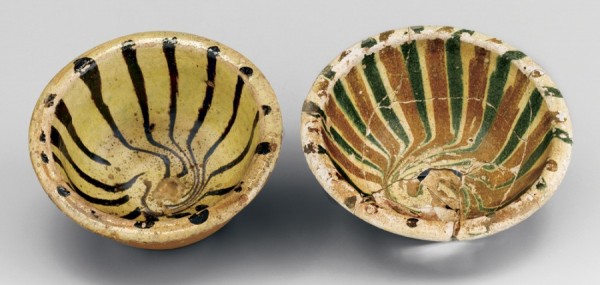
Slipware bowls, North Carolina. Lead-glazed earthenware. Left: Bethabara or Salem, 1770–1790. D. 6". (Private collection.) Right: recovered at the site of the gunsmith’s shop at Bethabara, 1787–1789. (Courtesy, Historic Bethabara Park; unless otherwise noted, photos by Gavin Ashworth.)

Slipware bowl fragment recovered at Gottlob Krause’s pottery site, Bethabara, North Carolina, 1790–1800. Bisque-fired earthenware. (Courtesy, Historic Bethabara Park.)
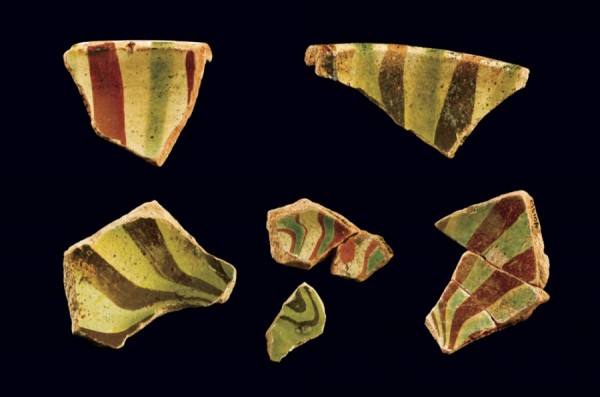
Slipware bowl fragments, recovered at the Mount Shepherd pottery site, Randolph County, North Carolina, 1793–1800. (Courtesy, Mount Shepherd Collection, Mount Shepherd Retreat Center.) These marbleized fragments are nearly identical to those excavated at Bethabara.
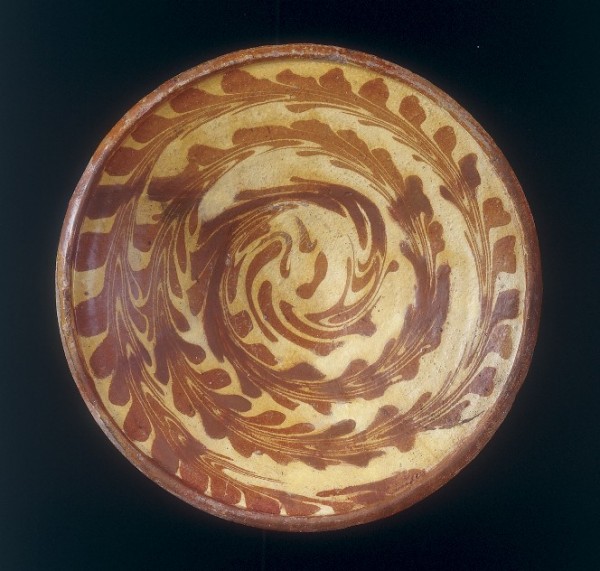
Dish, Netherlands, late-seventeenth century. Lead-glazed earthenware. D. 12 3/4". (Courtesy, Chipstone Foundation.) This example shows the use of slip with a technique similar to that used at the William Rogers pottery in Yorktown, Virginia.

Fragmentary dish recovered at the William Rogers pottery site, Yorktown, Virginia, 1720–1745. Lead-glazed earthenware. D. approx. 13". (Courtesy, National Park Service, Colonial National Historical Park, Yorktown Collection.) Among several large fragments recovered from the Rogers site is this partially reassembled dish. The technique used to create the marbled pattern is similar to that used by the North Carolina Moravian potters.
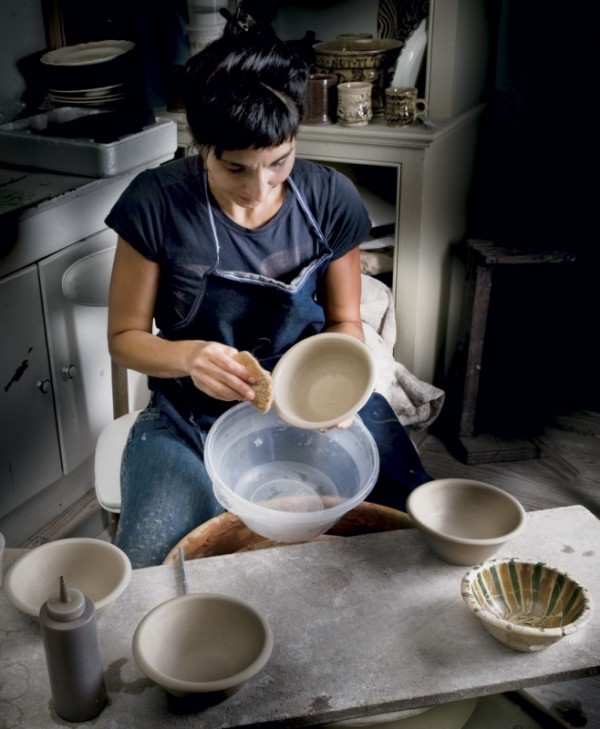
The deep-sided bowls are thrown on the wheel in a white earthenware and allowed to dry to a leather-hard state.

White slip is poured into the interior of a leather-hard bowl and then poured off, leaving a wet coating on the surface.
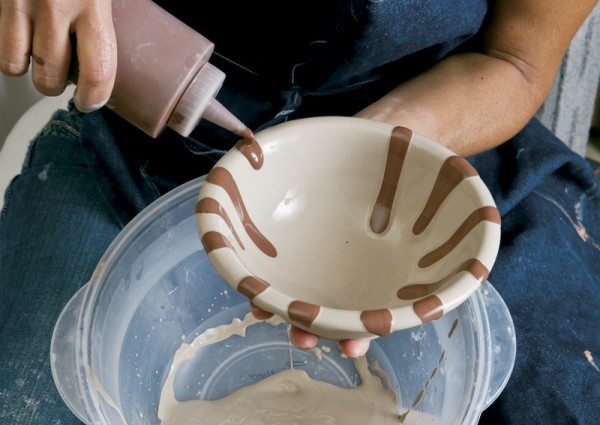
The bowl is tilted slightly and immediately lines of red slip are dropped onto the top of the rim and allowed to flow freely downward.
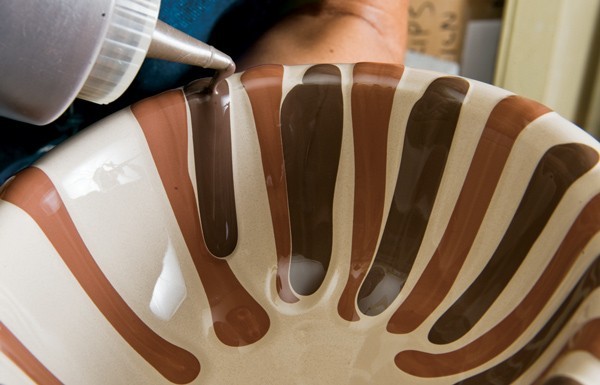
A second series of brown slip lines are placed between the red slip lines.
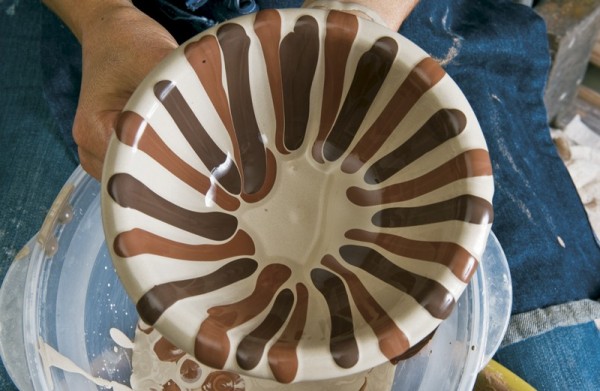
All of the red and brown lines have been dropped. The white-colored ground slip and the slip lines are still quite wet and fluid.

The bowl is tipped and rotated to swirl the slip lines at the bottom of the bowl. This must be done before the slips become too dry to flow easily.
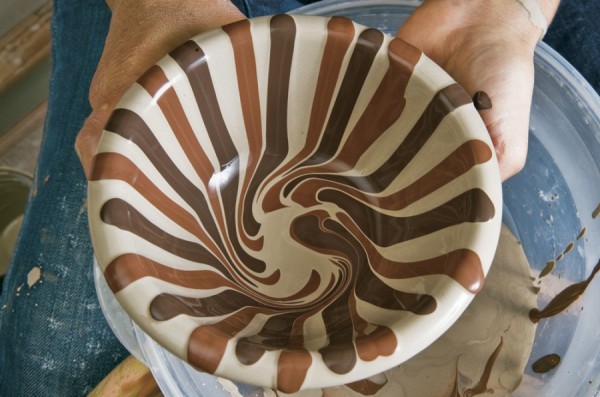
When the marbling effect is complete, the bowl is allowed to dry thoroughly before the bisque firing.

A group of marbled bowls in the wet state surrounds the archaeological specimen recovered from Bethabara illustrated in fig. 1. There is inherent variation in all these examples, including the clockwise and counterclockwise swirl of the slip lines. This technique is a quick but effective means of creating repetitive yet individualized decoration.
